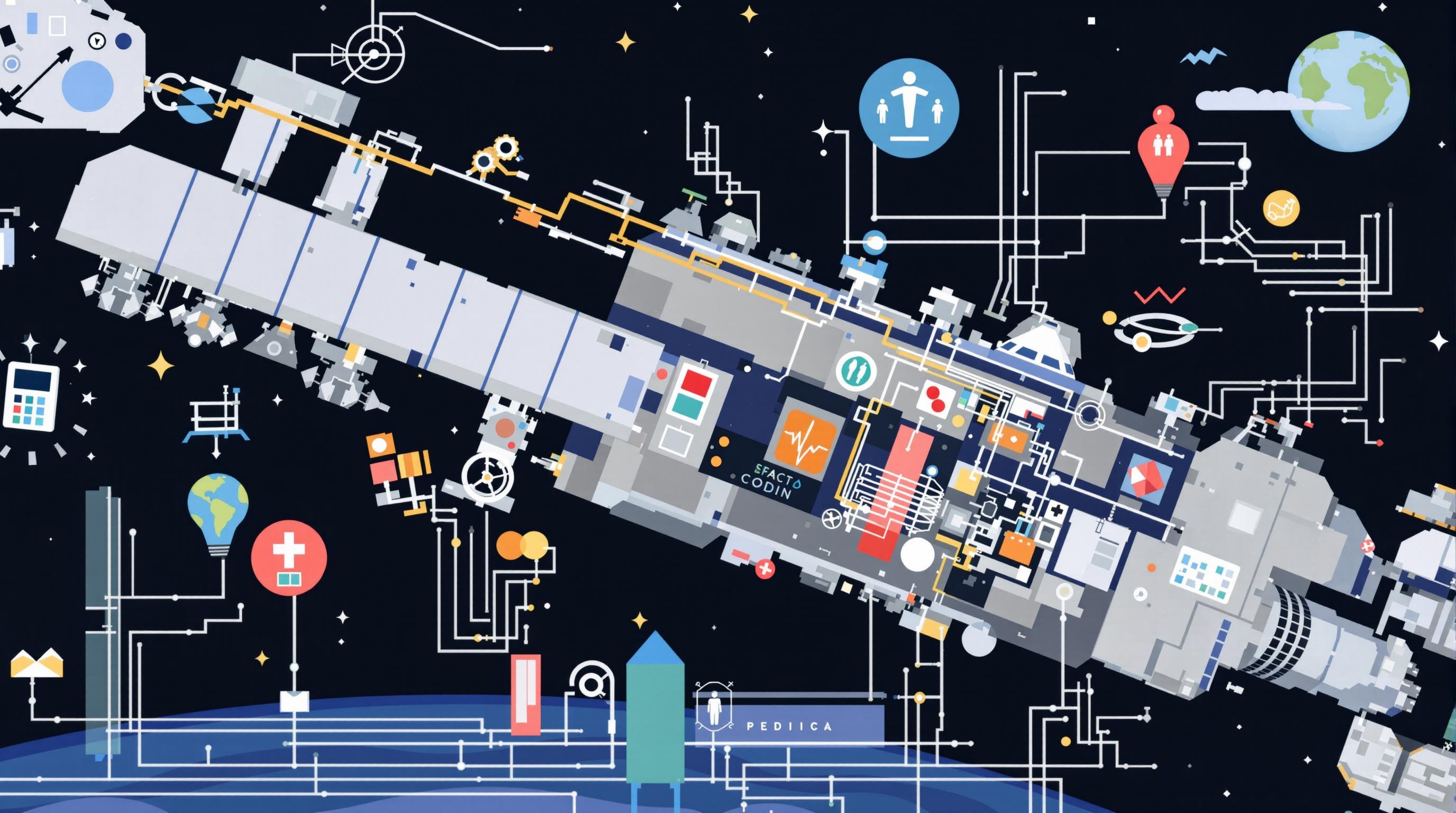Related Articles
- Top 6 Little-Known Medical Apps with User Interfaces That Actually Boost Patient Outcomes
- 5 Game-Changing Fitness Trackers from the Last 5 Years That Outperform Your Expectations
- Top 8 Breakthrough Portable Diagnostic Devices from the Past Five Years Revolutionizing Home Health Testing
- The Quiet Influence of Ancient Medical Records on Modern Healthcare Data Interpretation and Policy Making
- Top 6 Emerging Medical Coding Analytics Platforms from the Last Five Years for Data-Driven Decision Making
- Examining the Impact of Quantum Computing on Future Remote Healthcare Data Defense Strategies
The Rise of Medical Coding in Space Medicine: Decoding Health Data Beyond Earth’s Boundaries
The Rise of Medical Coding in Space Medicine: Decoding Health Data Beyond Earth’s Boundaries
The realm of medical coding is venturing beyond terrestrial borders, enabling the management and understanding of astronaut health data with unprecedented precision. As space missions grow longer and more complex, this specialty becomes pivotal in ensuring human survival and wellbeing in orbit and beyond.
Written by Claire, Age 29 — Technology Enthusiast and Aspiring Space Medic
Data is the Lifeline of Space Medicine
Imagine the complexities involved in monitoring a crew’s health 250 miles above Earth. Traditional medical records are insufficient; instead, medical coding brings structure, transforming streams of health data into actionable intelligence. NASA’s Artemis program, aiming to return humans to the moon, emphasizes this integration of medical informatics and coding to tackle space-specific ailments like cosmic radiation exposure and bone density loss.
Why Medical Coding in Space? A Short Story
In 2027, aboard the International Space Station, astronaut Dr. Kim developed an unusual skin rash. Localized data inputs coded via SNOMED CT (Systematized Nomenclature of Medicine — Clinical Terms) pinpointed the condition linked to microgravity-induced changes in skin physiology. Rapid identification led to an in-flight treatment protocol, preventing escalation. This anecdote underscores how correct medical coding transcends simple documentation—it becomes a lifeline in space medicine.
Formal Definitions Meet Cosmic Challenges
Medical coding, the practice of translating clinical observations into standardized codes, is no newcomer to healthcare on Earth. Yet, when we apply these codes in extraterrestrial environments, underlying assumptions shift. Space medicine data demand new layers of classification to capture conditions that simply don’t exist at sea level.
According to the Journal of Space Health (2023), incidents of space-associated neuro-ocular syndrome (SANS) have been increasing with longer missions, illustrating the need for specific ICD-11 (International Classification of Diseases) codes for spaceflight-induced conditions.
Anecdote with a Humorous Twist
Some say if Martians had a healthcare system, their medical coders would have a panic attack deciphering "Zero-G indigestion." But seriously, humor aside, space introduces odd ailments that medical coding must tactfully catalogue. The interplay between human physiology and microgravity effects can turn a routine diagnosis into a cosmic riddle.
The Growing Importance of Structured Health Data
Structured data enables AI-driven predictive analytics vital for mission safety. In 2022, the European Space Agency (ESA) incorporated medical coding frameworks to feed machine learning models that predict cardiovascular risks in space. Early warnings based on coded health metrics have the potential to save missions and lives.
Statistics to Emphasize Growth
Did you know that space agencies’ investment in health informatics has jumped by 45% since 2020? The surge correlates with increased interest in long-duration spaceflights, such as missions to Mars, where remote healthcare depends largely on accurate coding and data interpretation.
Challenges in Decoding Spaceborne Health Data
Medical coders face unique hurdles: limited bandwidth transmissions, need for near-real-time data entry in a zero-gravity environment, and interoperability across international agencies. Each factor complicates the coding process but also drives innovation.
Interoperability is crucial. The Space Medicine Informatics Consortium (SMIC) works tirelessly to harmonize coding practices among NASA, ESA, and Roscosmos, enabling seamless health data exchange regardless of spacecraft origin.
The Persuasive Case for Investment
Investing in specialized medical coding training for space missions is not just an option; it's an imperative. Health-related incidents during flights have accounted for nearly 20% of mission delays and aborts historically, according to NASA's Human Research Program. Better coding could identify risks sooner, improve treatments, and reduce costly mission failures.
Example: Coding for Mental Health in Space
The psychological toll of isolation and confined living is well-documented. Specific codes for anxiety, depression, and sleep disorders tailored to space conditions aid in both monitoring and intervention. Space agencies are refining these coding systems to flag mental health issues early, potentially preventing crises millions of miles from Earth.
Future Horizons: AI Meets Space Medical Coding
Imagine AI-powered coders onboard spacecraft capable of real-time diagnosis and treatment suggestions. This futuristic prospect is closer than you think. Deep learning algorithms trained on vast repositories of coded health data hold promise to revolutionize space medicine, offering autonomous healthcare support during deep space missions.
Current projects like NASA's “Smart Medical Assistant” use annotated datasets derived from medical coding to enhance AI’s diagnostic accuracy in space-like conditions.
Casual Chat: How Does This Affect You?
Maybe you’re not an astronaut, but venturing into space medicine coding helps push healthcare boundaries for everyone. Techniques developed for space often trickle down to Earth applications, improving telemedicine and remote diagnostics. So the next time you have a virtual doctor visit, remember — space medicine might be behind that smooth interaction!
Closing Storyline
Back on Earth, young coders now study “Astro-coding” as a new discipline merging classic medical coding with extraterrestrial adaptations. Universities worldwide have launched space health informatics programs, preparing the next generation of professionals to decode human health beyond Earth's boundaries. The rise of medical coding in space medicine is not just a chapter in human exploration; it’s a cornerstone for survival as we reach further into the cosmos.




